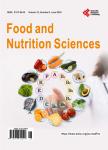Purchasing Patterns and Consumer Level Waste of Fruits and Vegetables in Urban and Peri-Urban Centers in the Philippines
Purchasing Patterns and Consumer Level Waste of Fruits and Vegetables in Urban and Peri-Urban Centers in the Philippines作者机构:Postharvest Horticulture Training and Research Center College of Agriculture and Food Science University of the Philippines Los Banos Laguna Philippines Food and Agriculture Organization of the United Nations Rome Italy
出 版 物:《Food and Nutrition Sciences》 (食品与营养科学(英文))
年 卷 期:2017年第8卷第10期
页 面:961-977页
学科分类:1002[医学-临床医学] 100214[医学-肿瘤学] 10[医学]
主 题:Fruit and Vegetable Waste Supermarket Wet Market
摘 要:Fruits and vegetables are inherently perishable hence they are considered as one of the most wasted categories of food. While several studies have been conducted to assess consumer level waste of fruits and vegetables, few have been conducted in developing countries like the Philippines. A survey, using a pre-tested questionnaire, and involving 500 respondents, was conducted in selected urban and peri-urban areas in the Philippines, to ascertain consumer level fruit and vegetable waste. The quantities of fruits and vegetables wasted by supermarket shoppers and those who purchased fruits in wet markets were comparably low at 3% - 4%. This low level of consumer fruit and vegetable waste was attributed to the small quantities (250 to 500 grams per purchase) purchased by consumers in both categories of markets. Consumer level fruit and vegetable waste, showed a positive correlation to household size. The level of fruit waste was positively related to household income, and negatively related to shopper’s age. Consumers who shopped in supermarkets, purchased larger quantities of fruit when compared to those who shopped in wet markets. Wet market shoppers on the other hand, purchased large quantities of vegetables. Decay, and quality loss manifested by shriveling, wilting, toughening, browning and softening were the main characteristics of fruits and vegetables discarded by consumers. The underlying causes of this waste, cited by respondents included “forgot to eat, “poor quality, “forgot to cook and “overbuying. Consumer efforts to minimize waste include buying enough for consumption, consuming or using immediately after purchase, planning their menus, improving storage and purchasing produce that is of good quality.



